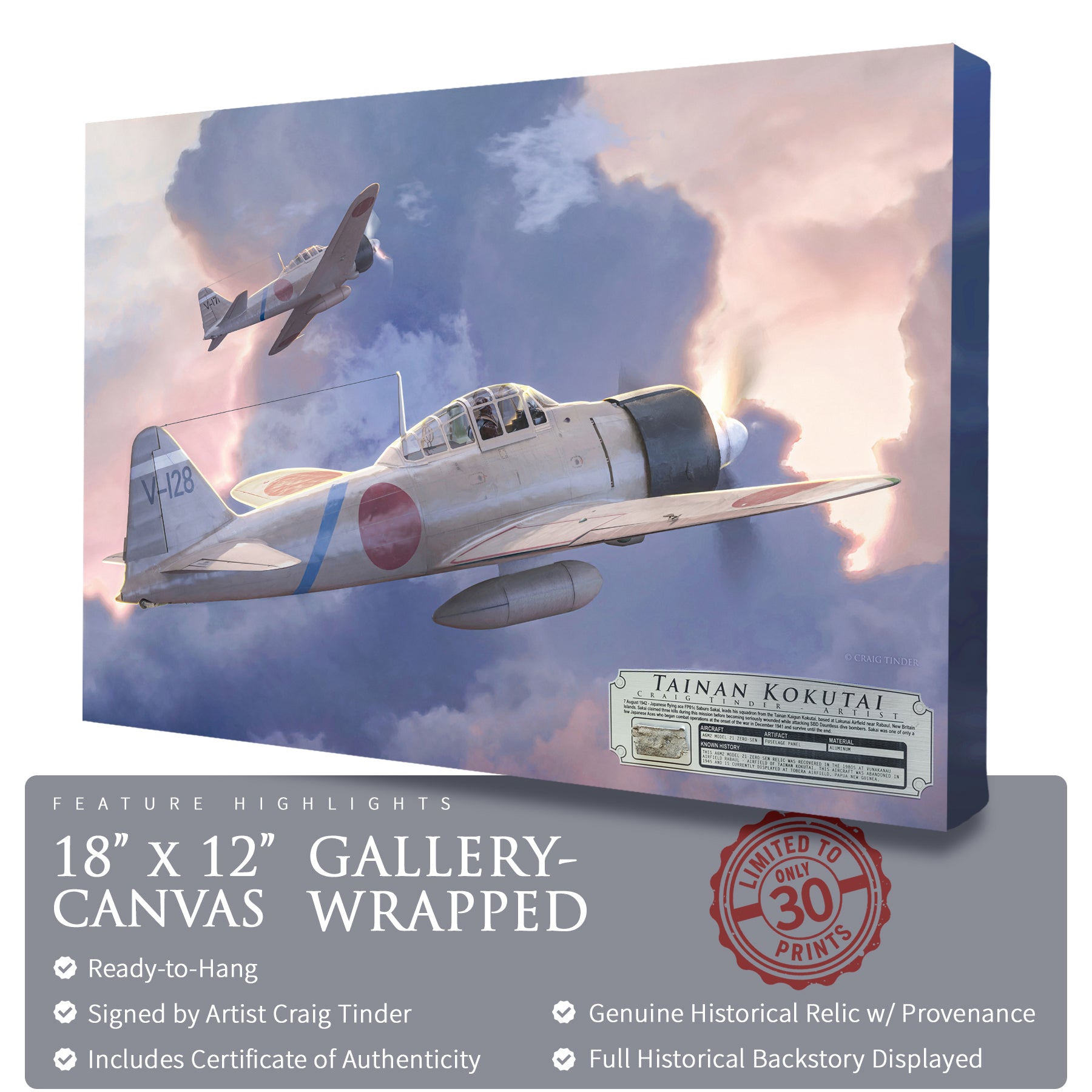
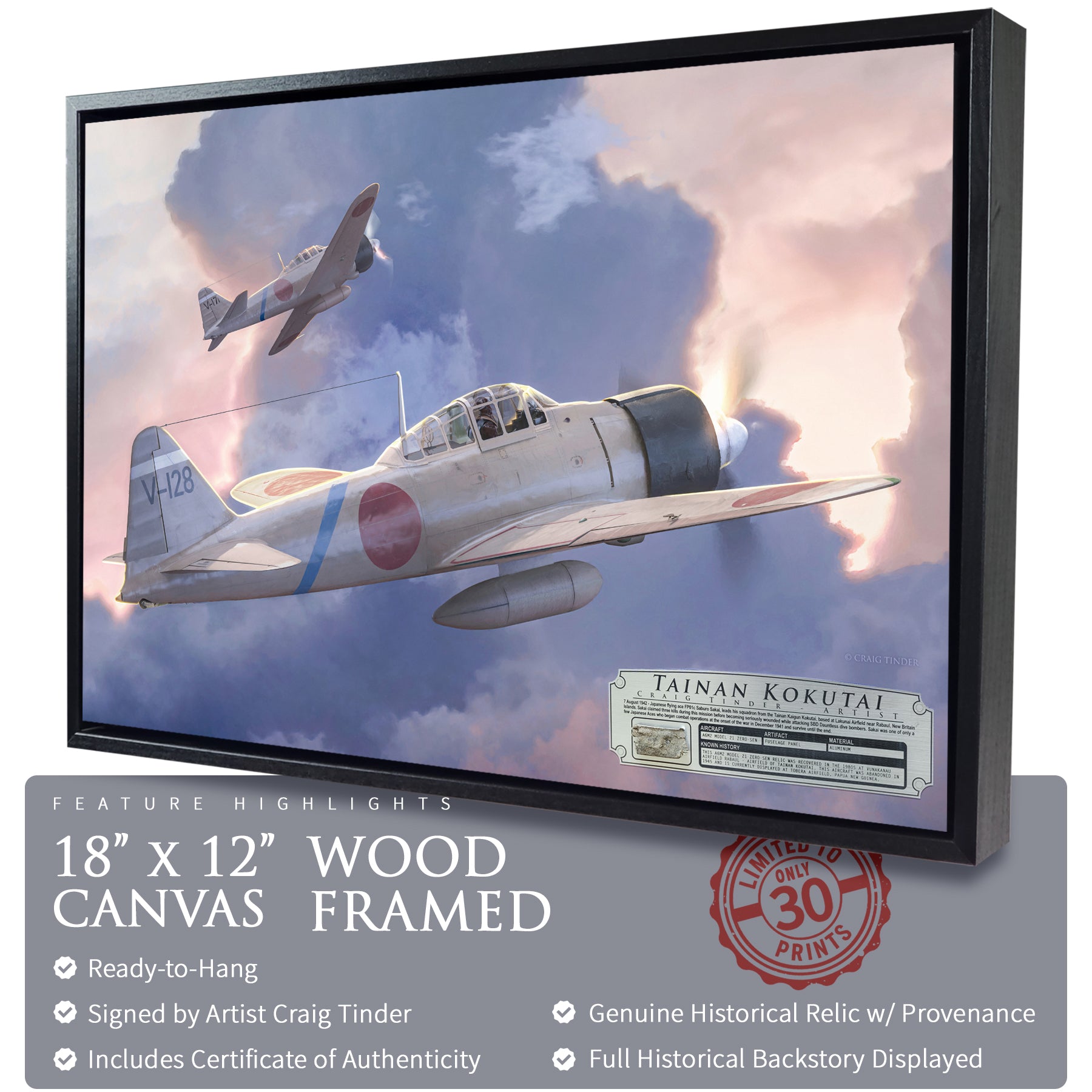
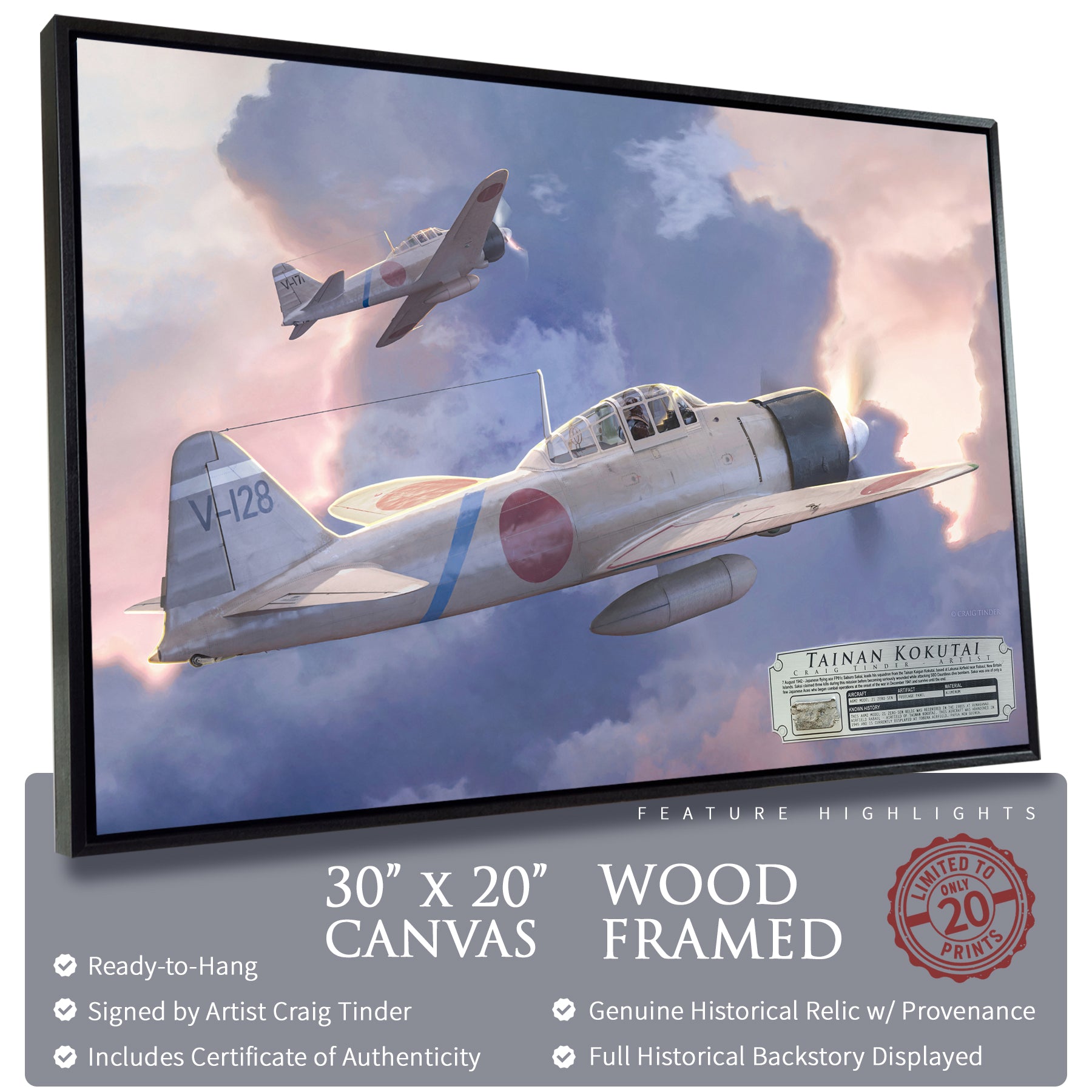
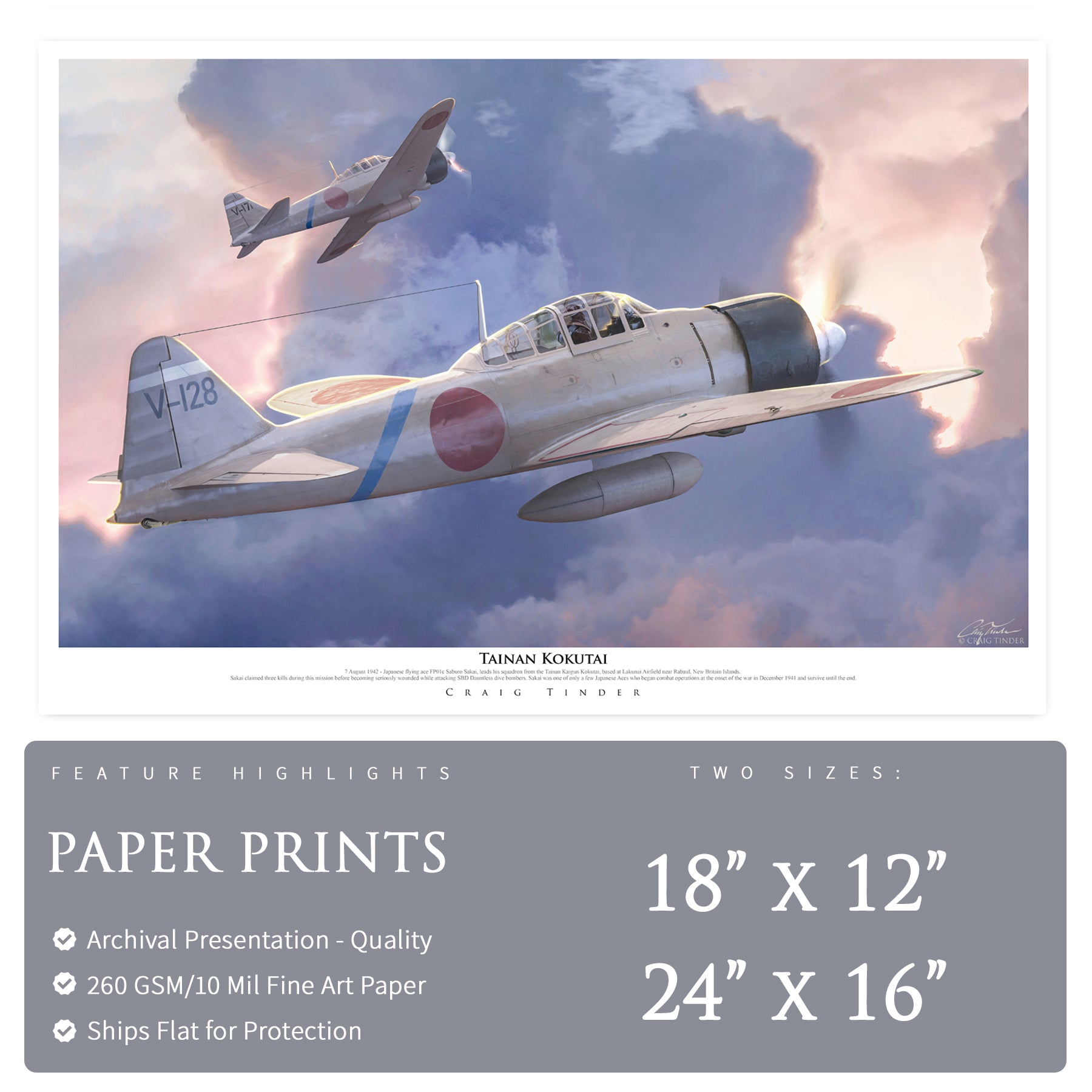
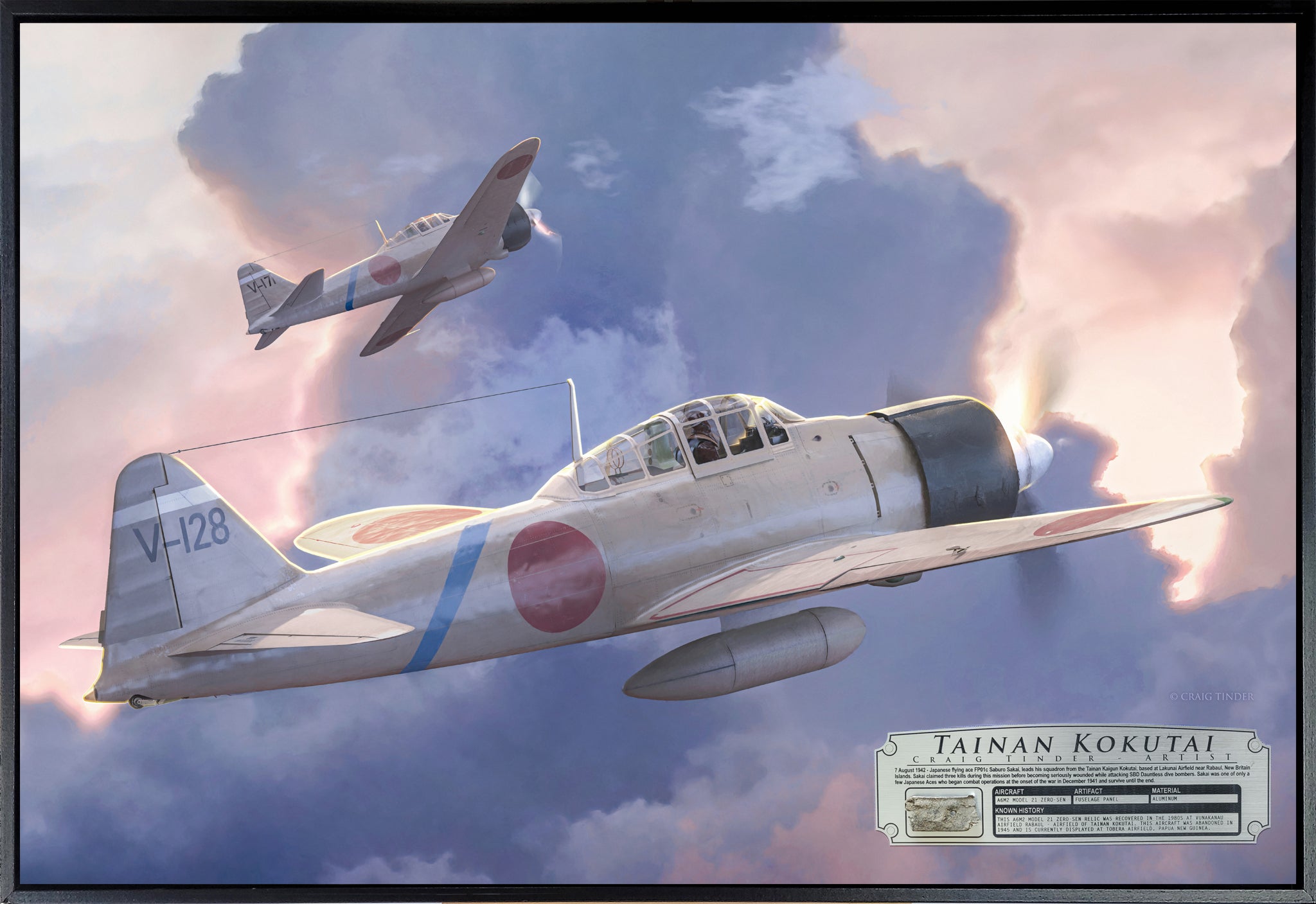
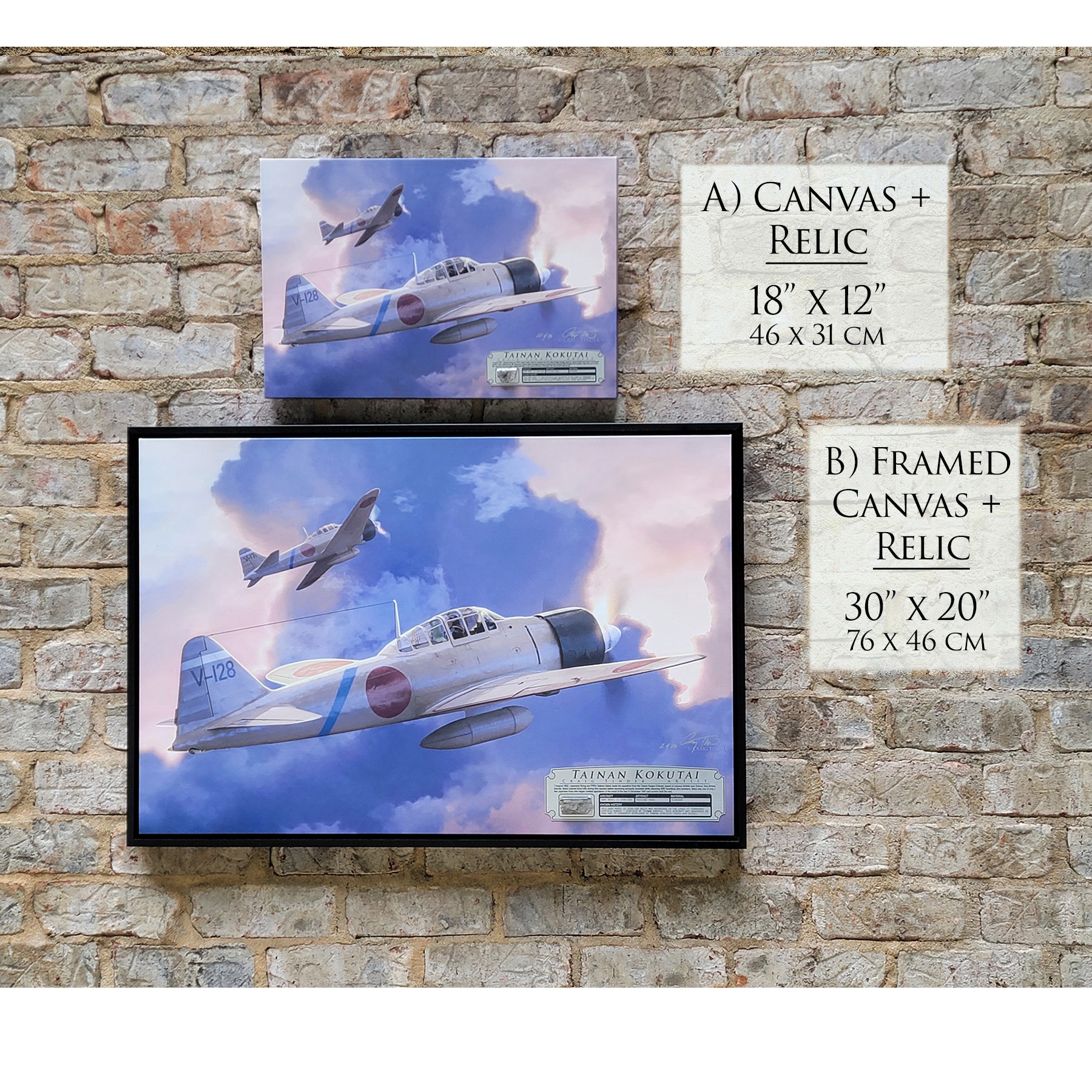
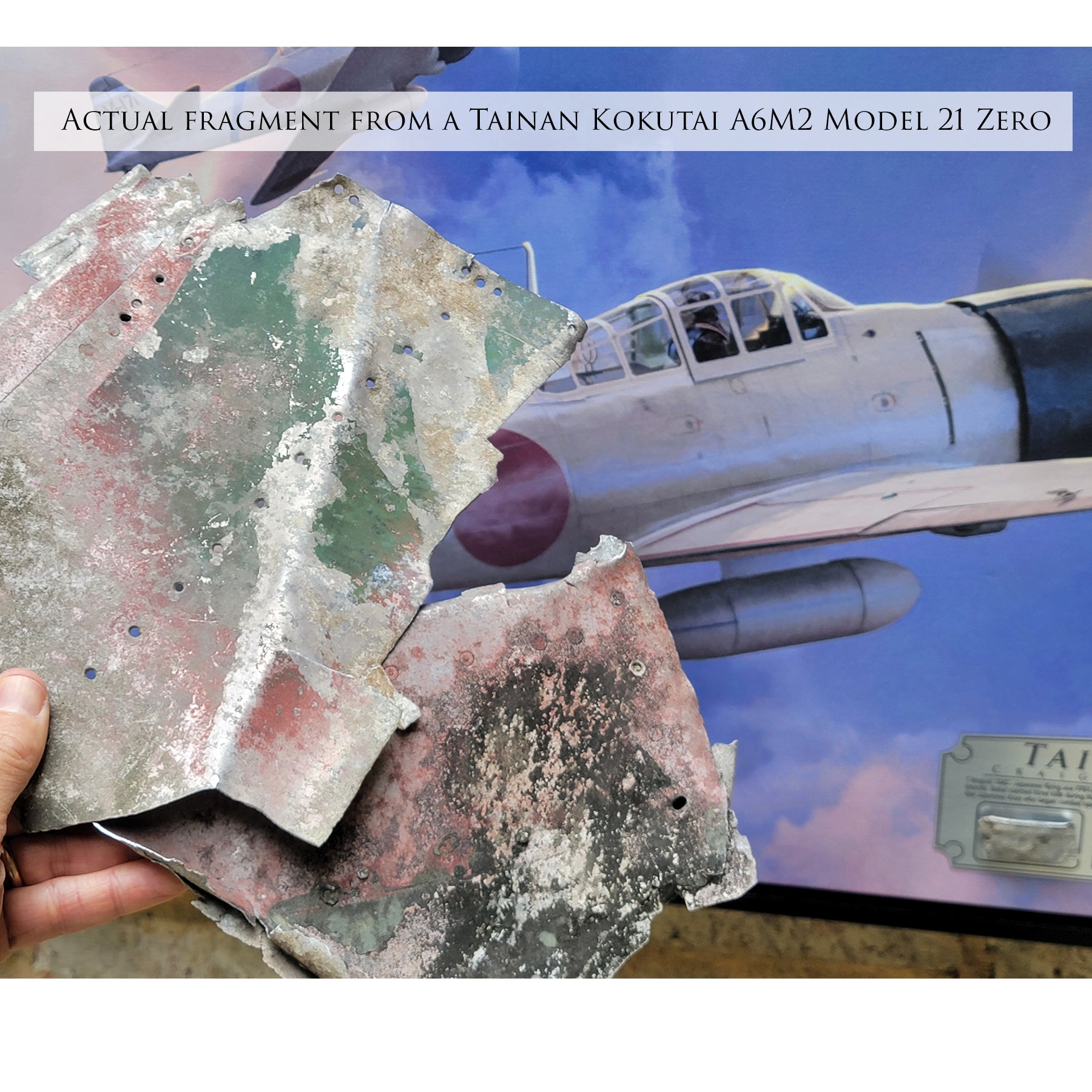
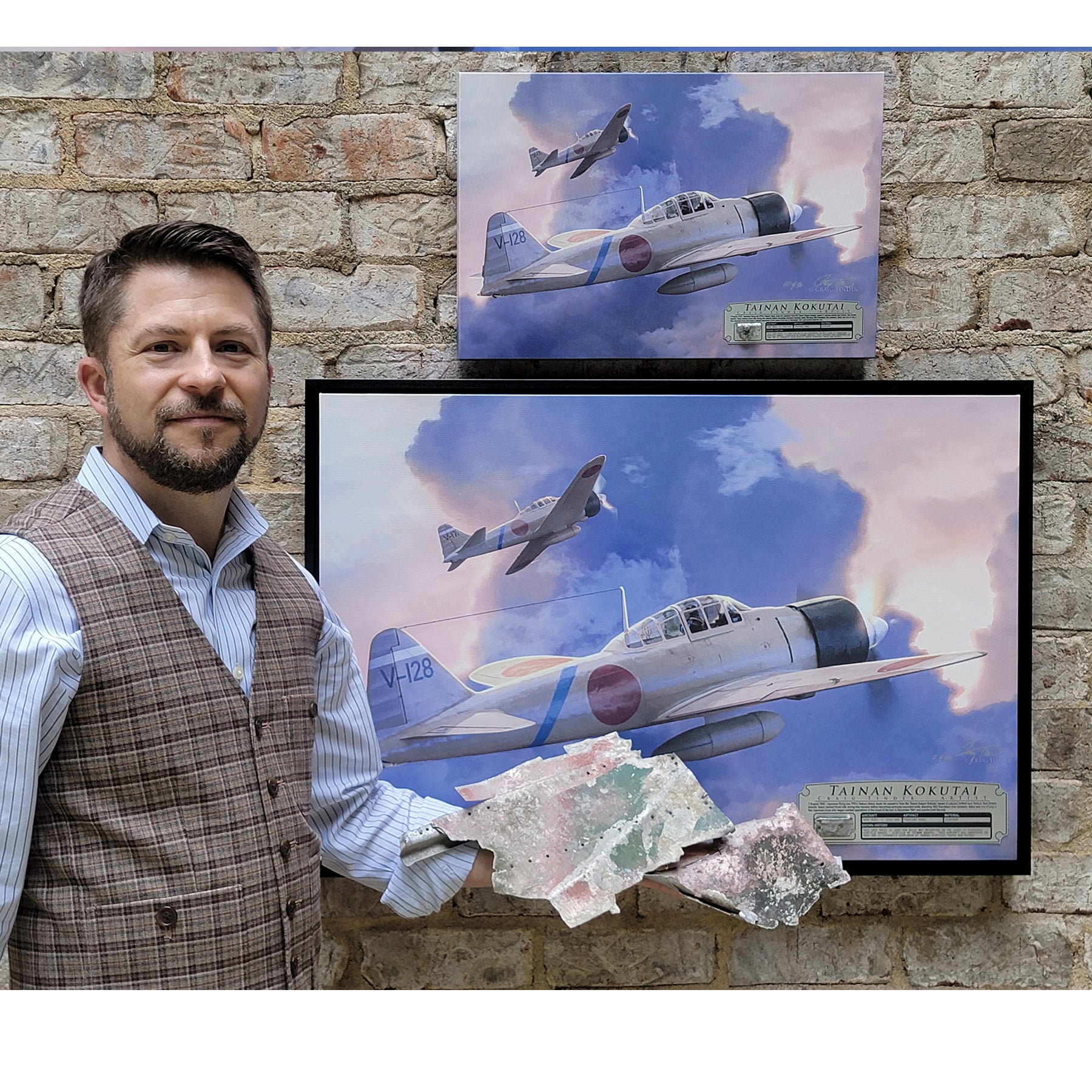


A6M2 Zero - Tainan Kokutai Canvas | INCLUDES: Wing Section Piece

A6M2 Zero - Tainan Kokutai Canvas | INCLUDES: Wing Section Piece
If you have any questions, you are always welcome to contact us. We'll get back to you as soon as possible, within 24 hours on weekdays.
Shipping Information
Use this text to answer questions in as much detail as possible for your customers.
Customer Support
Use this text to answer questions in as much detail as possible for your customers.
FAQ’s
Use this text to answer questions in as much detail as possible for your customers.
Contact Us
Use this text to answer questions in as much detail as possible for your customers.
Description
About the Relic & Process
This genuine aluminum fragment originates comes from an A6M2 Model 21 Zero Fighter of the Tainan Kaigun Kokutai, the same unit served by WWII ace Saburo Sakai. Recovered in the 1980s and acquired through the Museum of the Pacific (which closed in 2016), the fragment originates from the outer wing section of the aircraft and still retains original Imperial Japanese Navy green paint along with remnants of the red Hinomaru, the Japanese national insignia. Close-up view of the A6M2 Zero - Tainan Kaigan Kokutai wing aluminum fragments
Close-up view of the A6M2 Zero - Tainan Kaigan Kokutai wing aluminum fragments
The aircraft (serial number unknown) was abandoned at Vunakanau Airfield in Papua New Guinea, known to the Japanese as "Rabaul Number 2." Like many Japanese fighters later in the war, this Zero adopted the green paint scheme used by the Imperial Japanese Navy. After decades of neglect, the aircraft was eventually moved to Tobera Airfield. Aces in Action obtained this and other relics from the Museum of the Pacific, which show clear evidence of the aircraft's original wartime paint scheme. Close-up view of the "Tainun Kokutai" art data plate with A6M2 Zero relic
Close-up view of the "Tainun Kokutai" art data plate with A6M2 Zero relic
Disclaimer
By purchasing from Aces In Action, you acknowledge that the product may vary slightly from the images on our website. We use authentic materials from military vehicles and relics, which may contain potentially hazardous substances. These items are not intended for ingestion, inhalation, or use by children. Aces In Action is an independent company, unaffiliated with or endorsed by any other organization. All names, logos, and trademarks are the property of their respective owners and are used for identification only, in accordance with the Lanham Act. Their use does not imply any official endorsement.
